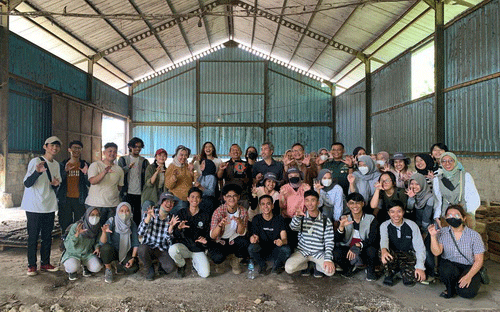Site Visit of Itenas’ Environmental Engineering Students to the Waste-based Briquette Processing Site with Kodam III/Siliwangi

The Institut Teknologi Nasional (Itenas) Bandung’s Environmental Engineering major did a site visit to the waste-based briquette processing site with Kodam III/Siliwangi on Tuesday (27/6/2023) owned by Koperasi Kartika Siliwangi in collaboration with PT Nawasena, West Bandung Regency. The Head of Environmental Engineering Major Dr. M. Rangga Sururi, S.T., M.T. and class of 2019-2022 Environmental Engineering students also took part in the visit.
The increasing waste due to daily human activities and the landfills that gets full made the Regional Military Commander of Kodam III/Siliwangi Mayjen TNI Kunto Arif Wibowo create an innovation, which is a waste processing tool into briquettes, in collaboration with PT Nawasena and Koperasi Kartika Siliwangi. Processing waste into briquettes has economic value and has an impact on reducing the volume of waste significantly.
The organic, residual, and inorganic (plastic) waste can be processed into briquettes. The composition for making briquettes is waste that is still wet, adhesive made from milled cassava that has been boiled, and additives that function as odor removers in waste. That additives used in the process are patented materials from Kodam III/Siliwangi.
Its process begins with milling the waste into small pieces, then mixing it with 5% cassava mixture and 2% additives which are then stirred well. Next, the mixed materials are put into the briquette forming machine. The machine will automatically form tubular black briquettes. After that, the briquettes are stacked and dried.
As told by Mr. Yaya Suhaya as field guide, the briquettes made from organic, residual, and inorganic (plastic) waste can produce heat above 1000 Celcius degrees and has been tested in several industries in Bandung regency.
“The combusted briquettes don’t produce smoke, so it’s environmentally friendly and more economical when compared to coal. The production process is quite a lot, over one ton per day and is distributed to industries in Bandung,” he said.
The combusted briquettes are also able to generate electricity. This can be proven by a biomass stove which is connected to electricity, so that it drives the blower and is able to regulate the temperature of the heat produced. This tool has a hole and a container as a water reservoir which functions to spur a bigger fire. The produced heat in the burnt briquettes can be converted into electrical energy which can be utilized, one of which is charging cell phones.
This activity is well appreciated by Dr. M. Rangga Sururi, S.T., M.T. (Head of Itenas’ Environmental Engineering major). The establishment of pentahelix between Itenas and Kodam III/Siliwangi is able to accelerate innovation development, one of which is solving waste problems and enabling Environmental Engineering students to carry out on-the-job training and final assignments in the same place.
The innovation of processing waste into briquettes should be increased in numbers, so that it can help overcome waste problems. The briquettes are economical, environmentally friendly, and run out immediately without producing residue after going through the combustion process.
Author: Rendi Akbar Kurniawan
